We use cookies to make your experience better. To comply with the new e-Privacy directive, we need to ask for your consent to set the cookies. Learn more.
Using SDS Sheets to Evaluate PPE
A product’s Safety Data Sheet (SDS) provides information on chemical hazards in a user-friendly format. Whether you’re evaluating a potential purchase or performing a hazard assessment, the SDS is a necessary resource.
This is particularly true for industrial operations. Safety Data Sheets include essential data about the personal protective equipment (PPE) that personnel need to wear when working with a chemical. By reading an SDS carefully, you can create a safer work environment.
Of course, you’ll need to use the right approach. Here’s what employers need to know about using Safety Data Sheets.
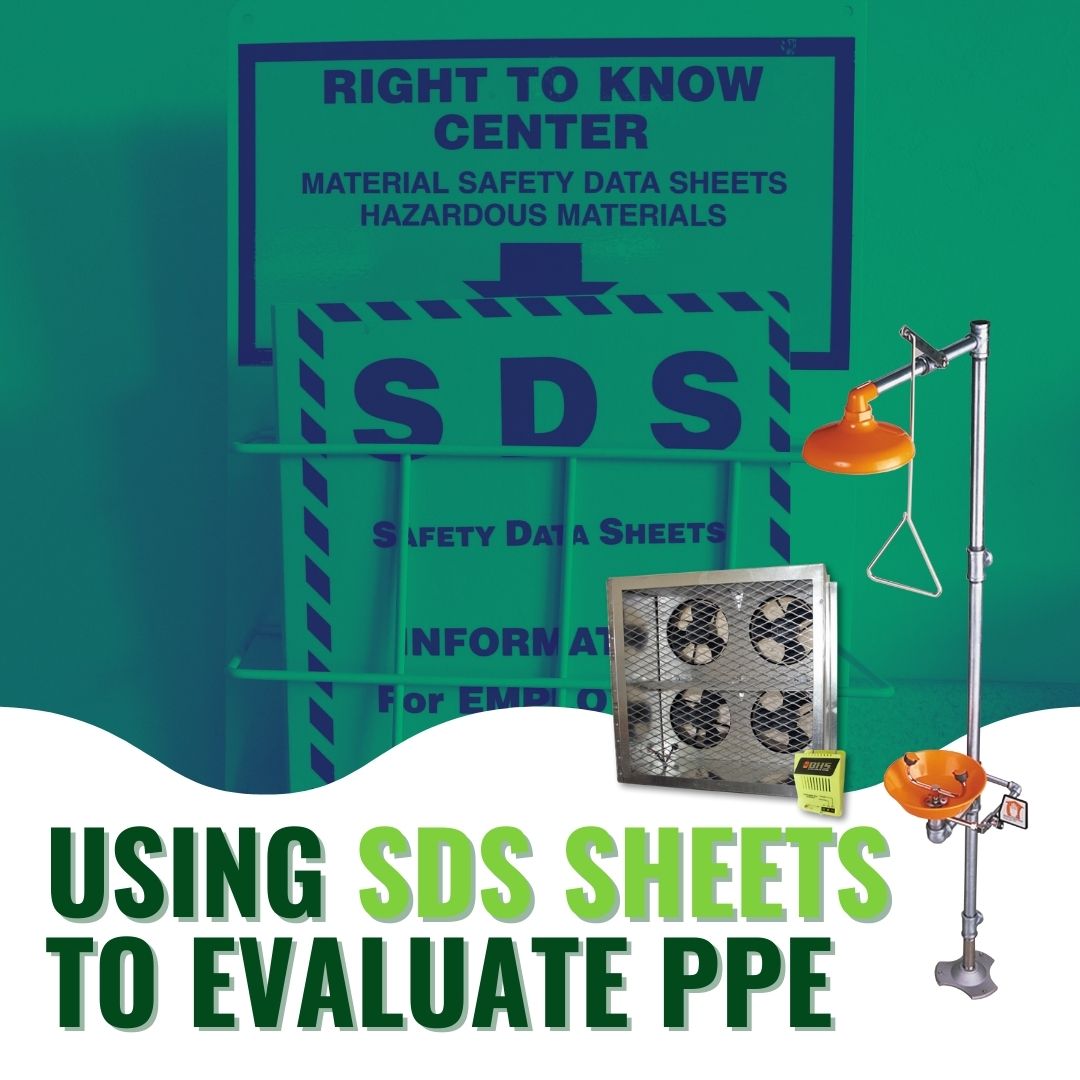
Reading Safety Data Sheets: Where to Find PPE Guidance
An SDS contains 16 sections, subtitled to improve readability. The first two sections include info about the chemical and its potential hazardous qualities. Additional sections offer guidance on usage, storage, and disposal.
The required sections of an SDS include:
- Identification
- Hazard Identification
- Composition/Information on Ingredients
- First-Aid Measures
- Firefighting Measures
- Accidental Release Measures
- Handling and Storage
- Exposure Controls/Personal Protection
- Physical and Chemical Properties
- Stability and Reactivity
- Toxicological Information
- Ecological Information (Non-Mandatory)
- Disposal Considerations (Non-Mandatory)
- Transport Information (Non-Mandatory)
- Regulatory Information (Non-Mandatory)
- Other Information
For PPE purchasing, the most relevant sections are Section 6 (Accidental Release Measures) and Section 8 (Exposure Controls). However, be sure to read through the entire document for additional information regarding hazard control and first-aid. An SDS can also provide crucial considerations that affect how employees work — for instance, Section 2 includes a subsection titled “Medical Conditions Generally Aggravated By Exposure,” which could help employers identify whether an employee is predisposed to a greater level of risk from a certain hazard.
Safety Exposure Limits and Personal Protective Equipment
Section 8 contains safety exposure limits, the amount of exposure an individual can be exposed to without requiring first aid. For example, sulfuric acid has a permissible exposure limit of 1 milligram per cubic meter of air. Exposure limits are determined by federal regulatory agencies including (but not necessarily limited to) OSHA. Permissible exposure limits can be extremely helpful when testing ventilation systems and other environmental controls.
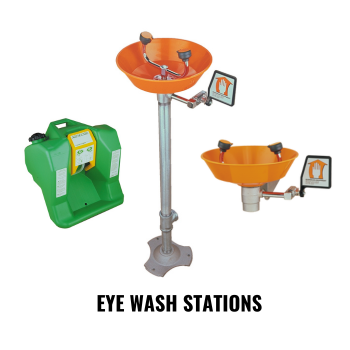
A typical SDS will list recommendations for ventilation, respiratory protection, eye protection, and skin protection, along with recommended engineering controls. If a certain type of personal protective equipment is unnecessary, the SDS will provide details (for example, a section might read “not required for normal conditions of use").
It’s important to understand that following OSHA-mandated PPE requirements does not absolve an employer of responsibility to meet safety exposure limits. In other words, equipment is considered a last line of defense against a chemical hazard — wherever possible, change work practices or implement engineering controls to prevent workers from encountering hazardous chemicals.
Products to Consider
Eyewash Stations - Safety Data Sheets often mention eyewash stations as an appropriate spill response measure, and OSHA 1926.441(a)(5) requires employers to provide these facilities. Solus Group offers a variety of eye wash stations and showers, including portable and pedestal-mounted options.
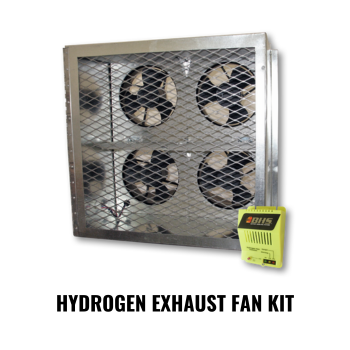
Hydrogen Exhaust Fan Kit (HEF-KIT) - The HEF-KIT is designed for battery rooms and other areas where hydrogen gas may be present. It includes a Hydrogen Gas Detector (HGD-DR), which sounds an audible alarm when hydrogen gas concentrations exceed 1 percent by volume.
Choosing PPE Materials with Safety Data Sheets
In some instances, an SDS may not provide detailed guidance for PPE purchasing. For instance, Section 8 might advise workers to “wear gloves,” but provide few details for the types of gloves needed.
This is often because chemicals have different risk thresholds based on application. If workers will handle the chemical for a few seconds, basic work gloves may be sufficient, but for long periods of exposure, they may require nitrile or rubber gloves.
OSHA’s guidelines are similarly vague, even when the administration makes a chemical-specific requirement. OSHA 1926.441(a)(5), for instance, reads:
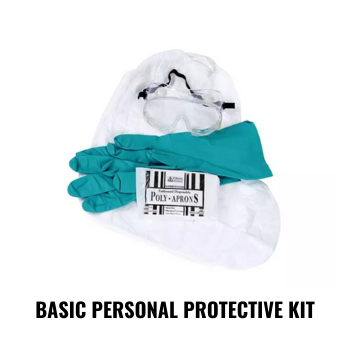
Face shields, aprons, and rubber gloves shall be provided for workers handling acids or batteries.
Apart from the material (rubber), the standard is fairly vague. The safest course of action is to choose equipment capable of withstanding extended exposure.
Consult Section 2 (Hazard Identification) for information about the chemical, then look for PPE specifically intended for the hazard. The resources below should help buyers purchase equipment made from appropriate materials, but remember to conduct your own hazard assessment before making your purchase.
Products to Consider
Basic Personal Protection Kit - Intended for basic spill response. The kit includes one pair of safety goggles, one pair of nitrile gloves, one disposable apron, and one pair of Tyvek shoe covers.
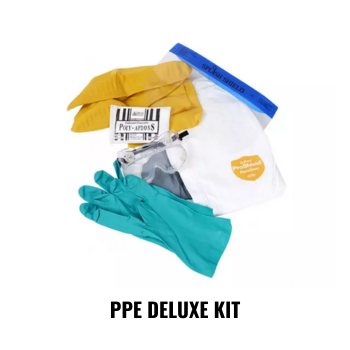
PPE Standard Kit - The Standard Kit includes a disposable face mask, one pair of safety glasses, one pair of nitrile gloves, a disposable apron, and a set of latex overboots. Ideal for use in the battery room, the Standard Kit provides essential protection when working with sulfuric acid and other hazardous chemicals.
PPE Deluxe Kit - Contains everything from the Standard Kit along with an additional chemical overall. Essential for personnel who work with chemical hazards regularly.
Further Reading:
Chemical PPE for the Workplace: Legal and Professional Requirements
Which PPE Kit Is Right For Your Application?
Maintain Documentation When Building Your PPE Strategy
OSHA requires employers to purchase appropriate personal protective equipment and to provide employers with relevant training for using their PPE properly. Per standard 1910.132(f):
The employer shall provide training to each employee who is required by this section to use PPE. Each such employee shall be trained to know at least the following: When PPE is necessary; what PPE is necessary; how to properly don, doff, adjust, and wear PPE; the limitations of the PPE; and the proper care, maintenance, useful life and disposal of the PPE.
OSHA also requires employees to demonstrate an understanding of their training and “the ability to use PPE properly" before performing work that requires PPE. It’s important to develop a training policy that addresses hazards individually, and employees should receive regular “refresher" training from time to time.
Safety Data Sheets can be helpful in coordinating training and maintaining relevant documentation. Maintain every SDS and consider using the wording from the sheets in your training — particularly if the sheet provides detailed guidance for handling, storage, and spill clean-up. You’ll also need to provide employees with access to SDSs.
Additional tips for using Safety Data Sheets:
- Keep your SDSs up to date. Even when chemicals remain unchanged, SDSs may be updated to reflect new research or to provide additional guidance.
- Provide all employees and contractors with full access to Safety Data Sheets. Employers have a responsibility to communicate hazards per OSHA standard 1200(a)(2), “Hazard Communication.” Ensure that the language of the Safety Data Sheet is the employee’s native language.
- If air monitoring is necessary, use the permissible limits on the chemical Safety Data Sheets to determine whether exposure levels are acceptable. Again, employers have a responsibility to communicate their testing results.
- Train employees to read Safety Data Sheets. Make sure they’re prepared to answer questions — this improves the safety of your work environment, and it’s also essential during workplace safety audits.
- Safety Data Sheets contain data about potential health effects (Section 11). Make sure managers are aware of this information; if an employee reports an injury or ailment, the info from the SDS may be useful in determining whether the condition is work-related.
- Always consult Safety Data Sheets before making decisions on how to store, move, or mix chemicals.
By design, Safety Data Sheets are easy to read and interpret. They’re filled with useful, essential data, and they’re helpful for both employers and employees. However, they don’t provide all of the guidance you need to build a perfectly safe workplace — you’ll also need appropriate personal protective equipment, first aid equipment, and spill response kits.
Solus Group can help your business find the necessary tools to operate safely and efficiently. For more information and guidance, call our sales team at (314) 696-0200.
